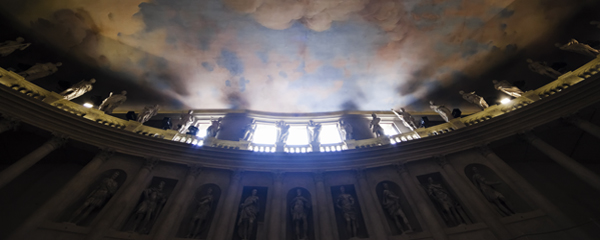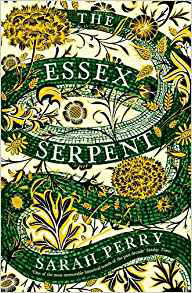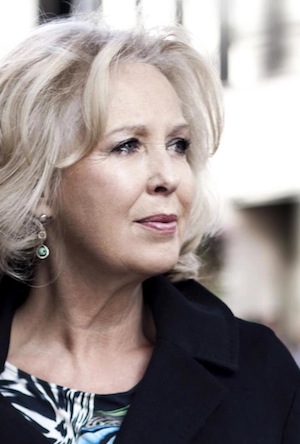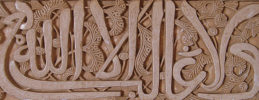
('Teatro Olimpico - Vicenza' © Marialba Italia, 2011)
GETTING INTIMATE WITH PLACE
By MARY O’DONNELL
In the course of our lives we may live in several different places, or we may never really move out of our original environment. The thing is, both scenarios are a fundament of such richness that once we are conscious of them as writers, they can become a source and resource which can alter the entire atmosphere of a story in progress.
Perhaps thinking about place is almost so obvious one could almost forget it. But there are many other concerns in composing a short story, distracting concerns like POV and who exactly is doing the seeing and speaking. You’ve also more than likely made a decision on tense – Past Tense or Continuous Present? – and also on whether you’re narrating in First, Third or even (less likely) in Second Person, and intellectually you’ve got yourself into that state of dispassion about the outside world, mixed with intense interest in the inner world of fiction, that makes writing possible. So you really do need to have a sense of where your story is set.
Sometimes we imagine we have a setting for a piece, merely by having named it, but place is so much more than that. It’s an intimate journey, an innate knowledge, an ability to draw up the best elements that define location, a request to each of us as writers to consider just what the relationship is between the place in which your story is set, and the character(s) you create. I can’t imagine Elizabeth Bowen having written some of her short stories had she not had at her disposal a deeply-layered consciousness of life as an Anglo-Irish woman in County Cork, nor if she had not wintered in the city of Dublin, nor if she hadn’t experienced war-time London. We need to absorb all the elements, the richnesses, the horrors, the unease and subtle unnameables from all our environments, because they are part of the fuel which drives a story forward, adding and enriching its atmosphere, defining how a character may feel, and offering a ‘stage’ or theatre in which outcomes may or may not occur.
 I was struck by the importance of place when I read a supernatural ‘Halloween’ story by Sarah Perry (of Essex Serpent fame) in a recent edition of The Saturday Telegraph. Her story was located very precisely, in Audley End, and describes the interaction between a young restorer and the legacy of a rather unsettling place. The woman’s task is to restore an ancient, carved, wooden screen within an old mansion. From the outset the story is steeped in the atmosphere that might accompany such a place: it is gothic, unsettling, and the descriptions of the screen in question (the newspaper reproduced a photograph of the actual screen) demonstrate a writer taking risks with an environment she may or may not know rather well:
I was struck by the importance of place when I read a supernatural ‘Halloween’ story by Sarah Perry (of Essex Serpent fame) in a recent edition of The Saturday Telegraph. Her story was located very precisely, in Audley End, and describes the interaction between a young restorer and the legacy of a rather unsettling place. The woman’s task is to restore an ancient, carved, wooden screen within an old mansion. From the outset the story is steeped in the atmosphere that might accompany such a place: it is gothic, unsettling, and the descriptions of the screen in question (the newspaper reproduced a photograph of the actual screen) demonstrate a writer taking risks with an environment she may or may not know rather well:
It was festooned with carved wreaths, and with wooden bunches of peach, grape and pear, all of which seemed overripe: her eye rested on a pomegranate splitting open to reveal its store of seeds, and she almost thought she caught the scent of rotting fruit. Here and there were other faces: grinning green men and limbless women with hard bulbous breasts. It was all in the Jacobean style, and admirable in its way; but nonetheless she found herself unwilling to meet its many unblinking eyes.
Needless to say, this screen is more than it appears to be, and as a symbol of all that is hideous in the backdrop of human nature, it functioned well for Perry as its author.
Short fiction is full of examples of place being strong enough to almost become a character, with vividly described settings that are intimately felt by both author and reader. In Ireland, writers are adept at using place as a dramatic setting and resource. It comes naturally, I feel, because our country is defined by an elementalism that is unavoidable, even in built environments. Why this is may have something to do with an inherited memory of the importance of naming places, and of small groups believing themselves to some extent defined by where they come from. In Gaelic, we have places which, roughly translated, mean ‘Place of the Little Hills’, ‘Church of the oak-trees’, ‘Pig’s Cove’, ‘Mass Rock’, ‘Meadow of the Smithy’, ‘Meadow of the bull’, ‘Rough Valley’ and so on.
Of course, writers don’t necessarily mention such places, but nonetheless I believe they are invisibly attached to the unconscious working space of a writer’s imagination, a little like a poem. That poem is written into every short story whether we speak of traditional writers such as Edna O’Brien and her wonderful evocations of County Clare, or writers of today who use towns, cities (Will Self) or even universities as backdrops (David Lodge).
My awareness of place began many years ago when a local but nationally celebrated writer in my home area agreed to read one of my first short stories. He had many things to say when he returned it to me, among them the fact that I hadn’t grasped the nettle of how the speaker in the story really felt when her friend announced to her that he was gay (and he was right). However, the positive aspect of the piece, about which he was also right, was that my sense of place was ‘good’. What I had done was set the piece – about a revelation by a lakeside between two friends – in my own home area, a place so familiar to me that I didn’t even need to think about it very much. It was in my blood. I knew it intimately. I knew the plants, the water, the seasons and how things might look at certain times. I knew the scents and movements of every hour of the days.
That’s what’s needed when we consider ‘place’. A knowledge of it as intimate as our own skin, and a sense of how to get behind that skin as we turn the wheels of imagination and bring into being a work which will be all the more memorable for having been defined by place. It does not mean writing about nature and seasons, it does not mean one has to be pastoral or bucolic. One can be urban, rural, whatever costume of place is available to us. After all, whatever you may think of him, when James Joyce called his only collection of short stories Dubliners, he was pointedly defining an entire book according to his sense of that place, its colours, its moods, its classes, its traditions, and its part Irish, but also part British, influenced culture.
~
 Mary O’Donnell lives in Co Kildare, Ireland and has published sixteen books (poetry, short stories and novels), including her recently re-published 1992 debut novel, The Light Makers (451 Editions). Her two short story collections are Strong Pagans and Storm Over Belfast, the latter long-listed for the Frank O’Connor International Short Story Award some years ago. She won the Fish Short Story Competition in 2011, has received the Jameson Short Story Award, and was runner-up in the VS Pritchett Short Story Prize in 2000. Many stories have been broadcast on Ireland’s national radio station RTE, and she has adapted two as radio dramas, also broadcast. A collection of linked short stories, Empire, set between 1915 and 1919 in Ireland and Burma, will be published by Arlen House in November 2017. A volume of essays, Giving Shape to the Moment: the Art of Mary O’Donnell, Poet, Short Story Writer, Novelist, is forthcoming in 2018. www.maryodonnell.com
Mary O’Donnell lives in Co Kildare, Ireland and has published sixteen books (poetry, short stories and novels), including her recently re-published 1992 debut novel, The Light Makers (451 Editions). Her two short story collections are Strong Pagans and Storm Over Belfast, the latter long-listed for the Frank O’Connor International Short Story Award some years ago. She won the Fish Short Story Competition in 2011, has received the Jameson Short Story Award, and was runner-up in the VS Pritchett Short Story Prize in 2000. Many stories have been broadcast on Ireland’s national radio station RTE, and she has adapted two as radio dramas, also broadcast. A collection of linked short stories, Empire, set between 1915 and 1919 in Ireland and Burma, will be published by Arlen House in November 2017. A volume of essays, Giving Shape to the Moment: the Art of Mary O’Donnell, Poet, Short Story Writer, Novelist, is forthcoming in 2018. www.maryodonnell.com

